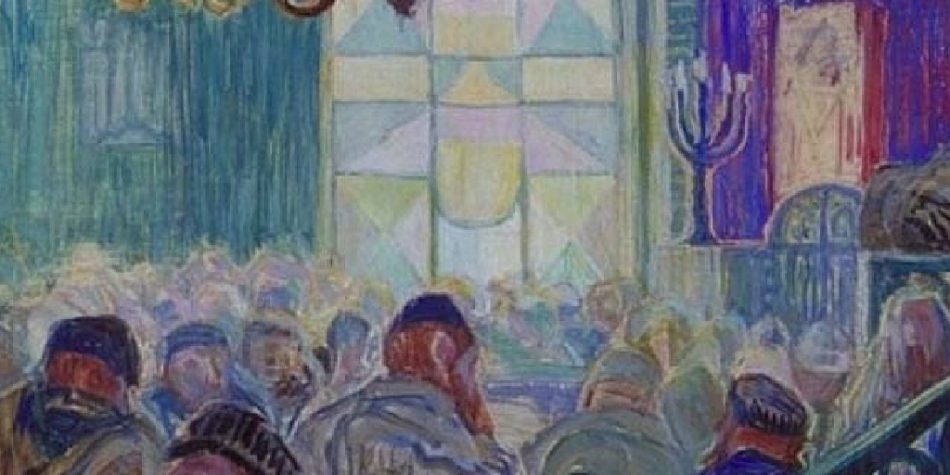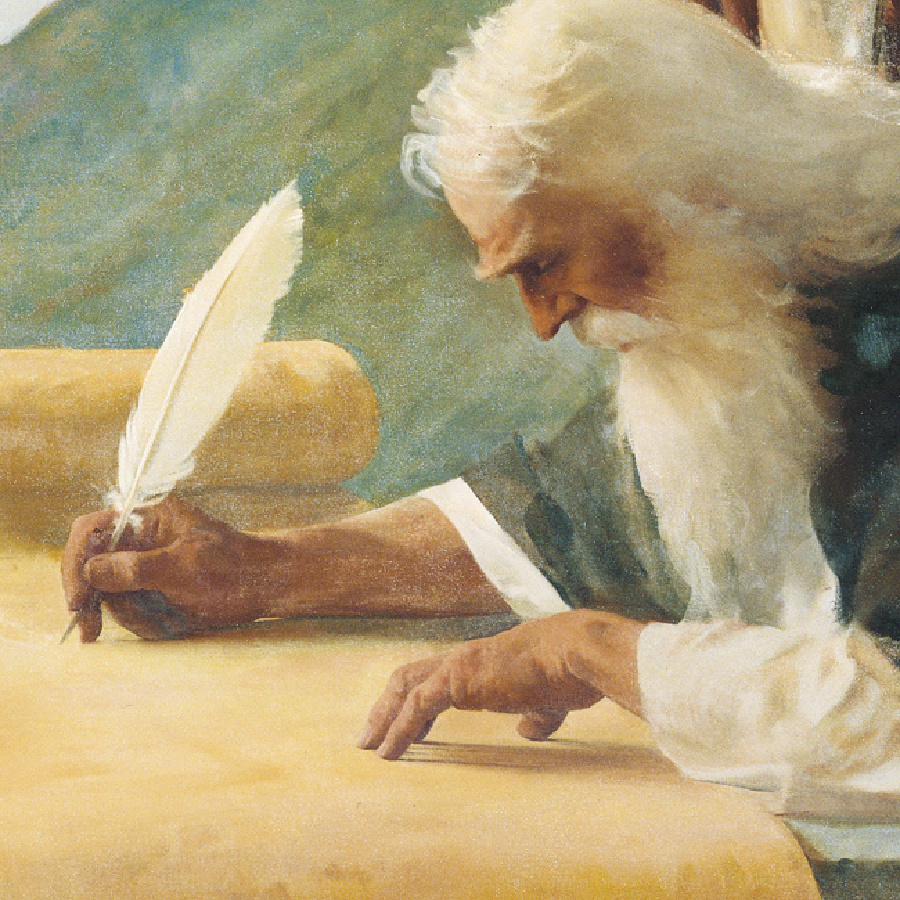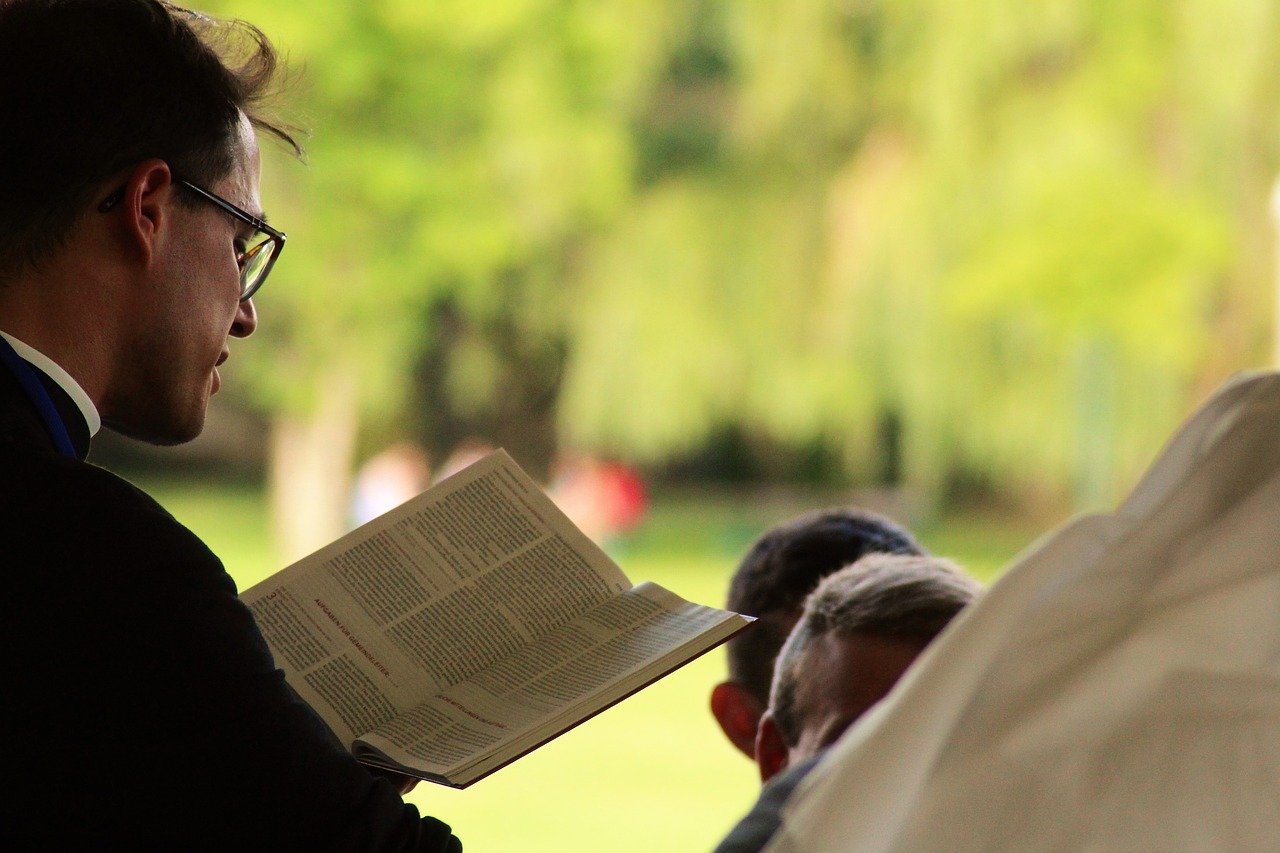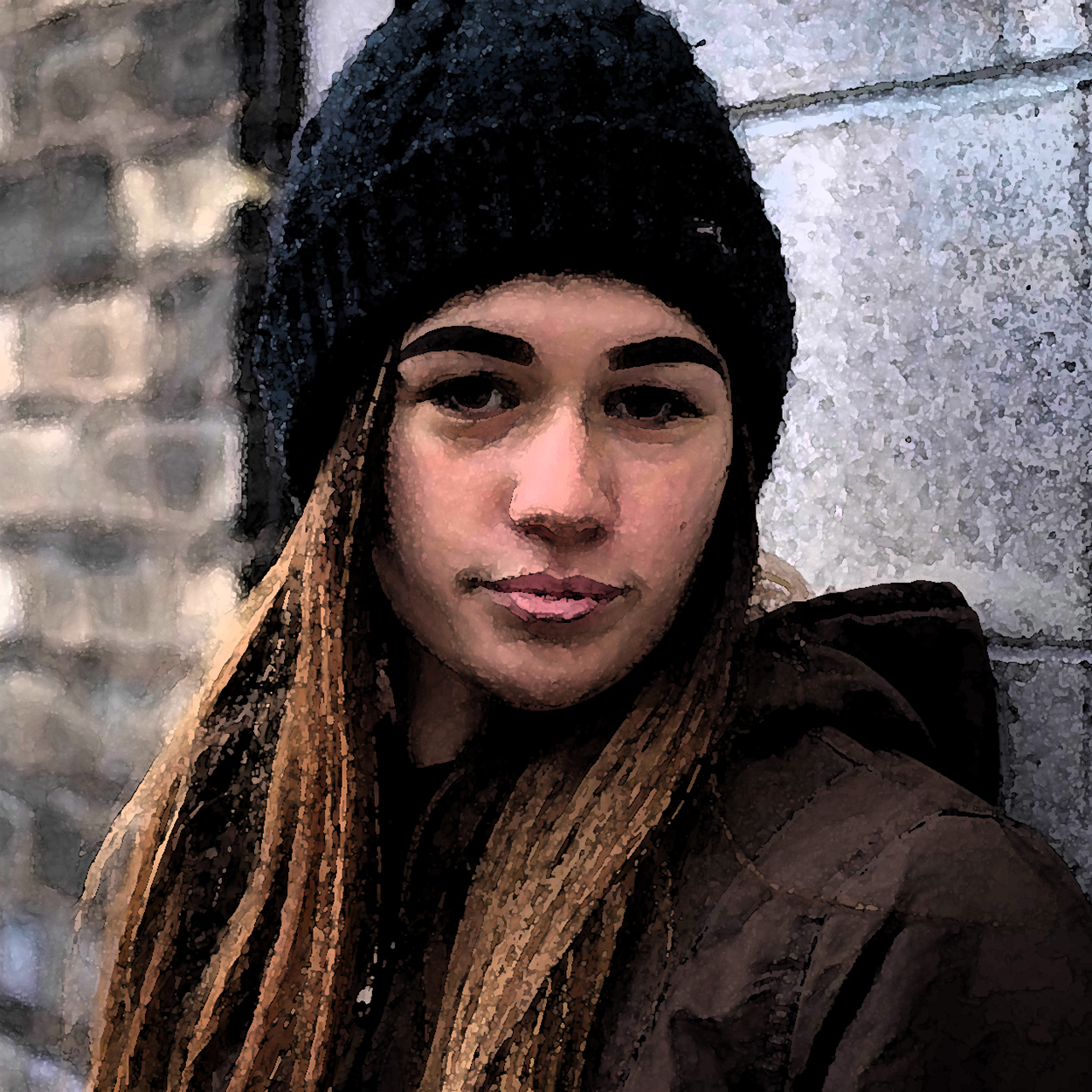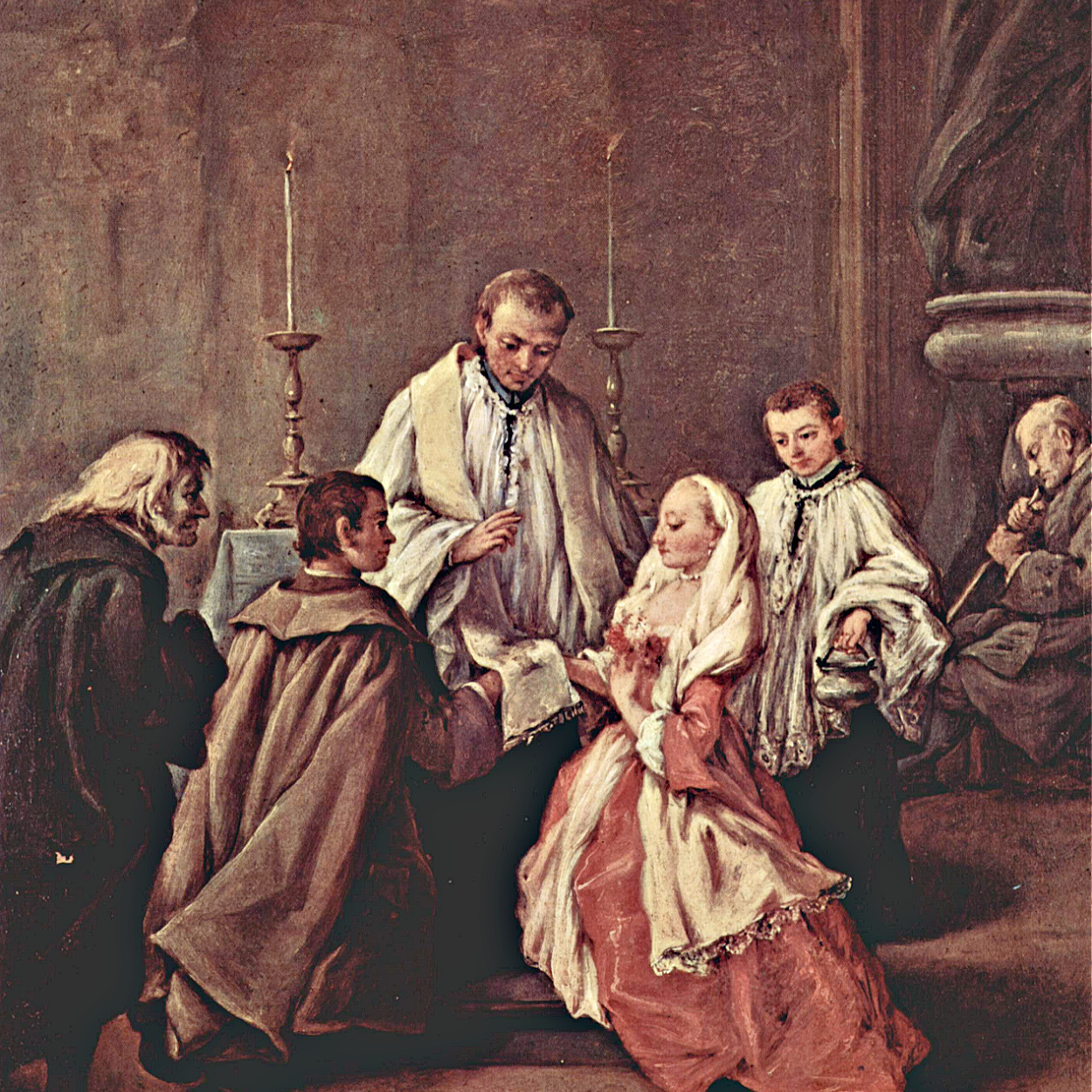In my 50 years as a member of The Church of Jesus Christ of Latter-day Saints, I have known and loved persons from a variety of faiths who have influenced my life for good. I have even confessed that during my youth in Oregon, thanks to a wealth of diverse friends, I may have learned more about being a “good Latter-day Saint boy” from those outside of my faith than from those inside my faith.
Each person we meet has something to teach us. Even occasionally mean-spirited treatment from another person can nurture our own conviction to be kind. It has been my experience that every soul I have taken the time to truly know and love has at least one gift, a unique capacity, a beautiful or delightful aspect of their being that elicits an admiration—a desire for more of “their gift” in my own life.
Like the diverse individuals that I have come to love, each faith has its strengths, its gifts, its aspects of excellence. For Dave Dollahite, my dear friend and colleague of almost 30 years, and for me, our American Families of Faith project has focused on the strengths of mothers, fathers, and children of diverse faiths that we discovered through in-depth interviews. What I have experienced is that it is both possible and life-enriching to seek, to consider, and to develop deep respect and holy envy for families and religious traditions that differ from our own.
It may also be argued that, like individual persons, each religious tradition has its own quirks, blind spots, and foibles. In my experience, taking potshots at these perceived weaknesses is a cruel game that can rapidly turn into a blood sport. My desire is to address aspects of excellence that I have seen in faith community services and activities where I was an “outsider” guest, attending as a friend, as co-director of the American Families of Faith project, or both. Today, I focus on sacred experiences I have had with African Methodist Episcopal (AME), Orthodox Jewish, Muslim (including Sunni and Shia), and Catholic friends and congregations.
African Methodist Episcopal (AME)
My dear friend Pearl Stewart, now a tenured professor at Montclair State University, remembers me first stumbling into her office “looking like a lost puppy dog.” I was a brand-new graduate student at the University of Delaware and she was about halfway through her Ph.D. program. Pearl, with her Master’s in Social Work and keen innate social sense, knew I needed “a mess of help.”
In short order, Pearl oriented me to the Delaware campus and the graduate program—including both the strengths and the absurdities. Before I knew it, she helped me line up summer employment, found a fitness club for my wife Sandra, and nestled me into a bonafide friendship. As the oldest of eight children in a Latter-day Saint family, I had never had an older sister but I did now. From navigating the details of my doctoral program to helping us get our old car fixed, Pearl was a multi-faceted helper on the spot.
In time, Pearl invited me to attend services with her on a “family day at her home church” in southern Delaware, about an hour drive from campus.
What a day it was! That day with Pearl and her extended family was the first time that I ever broke into a full sweat in a church service from dancing.
For those who might be accustomed to one-hour church, you must reframe your thinking because an African Methodist Episcopal service (or series of services) provides a full range of experiences. Services at an African Methodist Episcopal Church (AME), particularly on a “family day” (a kind of family reunion with a church wrapped around it) are not an hour or two … or three. Especially when members of a certain family are rallied and gathered to celebrate both faith and family, the services may run several hours or most of the day by the time you enjoy the wonderful potluck dinner at the end.
I have never been in services that run the gamut of emotions like AME services. For readers who listen to classical music, the services can be like the William Tell Overture. They begin with a tone that is subdued and calm, but, by the end, you’re galloping on the horse. It is a dramatic, dynamic, physical and spiritual experience. The apex for me was when Pearl’s brother-in-law finished his testimony of thanks to God for His goodness and grace with a full-bodied “soul shout.” I had never experienced anything like it, but I understood the spiritual intent and it truly shook me.
I am grateful for my dear friend and sister Pearl Stewart, for her caring and nurturing influence in my life, and for the wonderful day we spent at her AME Church in Delaware.
Orthodox Jewish
A beloved “second Mom” in my life, Harriet Bruette, has long served as a model and exemplar of religious tolerance and learning for me and many others. It was through Mom Bruette that I met our late Jewish friend Cheryl. Cheryl noted that my last name is Jewish and commented that it was unfortunate that I was lost to the Jewish people. She sought to set this at least partly aright by graciously inviting me to attend an Orthodox Jewish service with her at her synagogue in Wisconsin. I was and continue to be grateful for that sacred experience.
In Orthodox Jewish services, during prayer and other times of deep reverence throughout the service, the worshipper covers the head with the prayer shawl, eliminating all peripheral distractions from view (and, ideally, from the mind). The sole focus is on the Torah, the words given from G-d to Moses on Sinai.
Rabbi Peter Knobel has explained that in a synagogue setting,
When the Torah is taken from the Ark the congregation rises and the Torah is carried in procession through the congregation. The congregants reach out to touch the scroll with the fringes of their Tallit (prayer shawl) or their siddur. Excitement fills the room. The Torah is taken to the bima (the raised reading stand) and undressed. Members of the community are called up to recite a blessing over the reading or to chant the Torah portion. It is a great honor to receive an Aliyah (to be called up to recite the blessing over the reading).
Rabbi Knobel further explains that the accompanying Torah study is a symbolic “reenactment of the theophany at Mt. Sinai.” Rabbi Arthur Green has noted that:
The central part of our self-understanding is that Sinai-revelation is always happening. Every generation of Jews ever to be born or converted was there at Sinai. Ma’amad Harsinai (standing at Mount Sinai) means standing there with your heart open, knowing what you have to learn, knowing what you have to do.
Rabbi Knobel has written that
When the Torah reading is completed, the congregation rises, the scroll is lifted, and the text is shown to the congregation. … At this moment the congregation acknowledges that it is transported back to Mt. Sinai.
Elsewhere, Dave Dollahite and I have written that this image calls to mind for us the words former BYU president Karl G. Maeser, who observed, “There is a Mt. Sinai for every child of God if only he can be inspired to climb it.” The effort to ascend, to elevate, to go up may be called “making Aliyah.” Making Aliyah can mean ascending the elevated bima (the podium in the center of the synagogue) to read from the Torah scroll, but it can also mean a move to holy Israel or even a spiritual move towards God. This effort to ascend called Aliyah holds special meaning for my wife Sandra and me because it is the name of our lastborn child, who joined our family through a sacred journey of our own.
Returning to the service I attended with Cheryl, after the reading of the Torah from the bima (the podium upfront), the Torah scroll was reverently brought down to the congregation. I remember that a couple of older gentlemen who kissed their tassels and gently touched the tassels to the Torah scroll were welled up with emotion.
This experience left me with a powerful sense of the profoundly sacred nature of the written word from Sinai that has endured, like the Jewish people themselves, across harsh millennia of time. To this day, my experience in that Orthodox Jewish synagogue has influenced and impacted me and I am grateful for Cheryl’s invitation. Indeed, without the invitation to attend, I would have lost something that I seemed to find that day when I felt the spirit of God and something truly timeless and enduring.
Sunni and Shia Muslim
I’ve had the experience to join in services at both Shia and Sunni Muslim congregations. There is a separation of the sexes within the services to preserve modesty and to foster focus without distraction. Very early on I was unaware that it was inappropriate to offer your hand to someone of the opposite sex. I was gently instructed that a polite bow of the head to someone of the opposite sex is appropriate. A handshake is not.
My dear friend Zahra Alghafli, who was my doctoral student at LSU, and her husband Hashem, not only invited me to attend a Shia Muslim service with them but to speak to their faith community on the most important findings from the American Families of Faith project regarding marriage. I was honored to do so and remember the experience with fondness. Zahra and Hashem manifested humility, depth of intellect, compassion, and modesty and I cherished my time with them.
On one occasion, I was invited by an Imam in Louisiana to attend the five-times-daily prayer (Salat). It’s difficult as you enter a Muslim service as an outsider to realize the tension with the outside world that these congregations have felt since the 9-11 tragedies. Muslim hate crimes have increased in the United States by 1600-2000% since 2001.
Every faith has its extremists with which the more mainstream and traditional members of the church, mosque, or synagogue, radically disagree. Indeed, there are extremists in my own faith (or splinters from it) that tend to bring negative attention that is most unwelcome. After spending time with faithful Muslim brothers and sisters, you feel the dark shadow, the pall, that’s been cast over them by terrorists who have literally hijacked elements of their religion. This is nothing less than tragic, on many levels.
On a more joyous note, there is nothing quite like attending a Muslim Ramadan service. Alms-giving (zakat) and fasting (sawm) serve as two of the five pillars of Sunni Islam and these two pillars reach their shared apex during the devotion, unity, and celebration that surround the month-long fast of Ramadan. I witnessed Ramadan first-hand as an invited guest and felt the palpable ebullience as the evening service ended, timed with sunset and the close of the day’s fast.
While food adds flavor to any religious gathering, a sunrise-to-sunset fast makes the Ramadan meal particularly appreciated. Even so, the feeling is not “all you can eat buffet” excess. The tone seemed to me, if I may strive to put it into words, as follows: “At the close of this fast, we eat and calm the pain in our stomachs for which we are grateful to Allah. There are others, however, whose hunger does not end. Let us remember and help them.”
Accordingly, the discipline of the month-long fast is supplemented by offerings called Khums in Shia Islam. Khums consists of one-fifth of certain types of wealth that should be paid to the state of Islam to be used for the benefit of Muslim communities. In Sunni Islam, Zakat is an annual charitable offering of 2.5% of one’s wealth (net worth) as an effort designed to relieve the suffering of the poor whose involuntary fast is constant. Ramadan, Khums, and Zakat are practices without precise parallel among the faiths we have studied. Indeed, if this level of generosity were practiced by all privileged members of the human family, world hunger would be immediately and permanently eradicated. Indeed, the lived principles of Zakat and Khums stimulate not only a sense of deep respect and holy envy but also hope for a better world.
Catholic
It may surprise some readers to learn that my first of several attendances at Catholic services took place while I was serving as a young missionary for The Church of Jesus Christ of Latter-day Saints. Our mission president was a broadminded convert to the LDS faith who spoke of the beauty of the Catholic “Midnight Mass” held each Christmas Eve, and he granted us permission to attend these services in spite of the curfew violation involved (missionaries are typically expected to be home by 9:30 PM).
At the Midnight Mass, I was struck by the color, the incense, the pageantry, and the age and scope of the Midwest church where the services were held. [For additional discussion of my experiences at Catholic services and a memoriam of my high school guidance counselor and personal Catholic “saint,” please see Catholic and Orthodox Christian Families: Confession and Forgiveness.]
Later during my missionary service, I had the privilege of meeting, teaching, and learning from a Catholic family and we built a lasting friendship. Mary, the mother in the family, attended some services at our place of worship and invited my missionary companion and me to attend some services at her church. This was not standard practice but it seemed like a fair balance of trade to me, so we went. At one of these visits, I heard the hymn “On Eagle’s Wings” and fell in love with it. It is not in the Latter-day Saint hymnal, but I wish it was. Over the following months, my missionary companion and I attended several other Catholic services that were held preceding choral programs involving Mary’s sons at their Catholic school.
Mary introduced us to Father Paul (pseudonym), a delightful priest who was always welcoming, in spite of our position as “rival” ministers among his own flock. Mary likewise attended several services with us and eventually decided that she wanted to convert to The Church of Jesus Christ of Latter-day Saints. I was delighted. After all, such “conversion” experiences are an important aim of missionary service. My companion and I were chagrined to hear, however, that Mary wanted to personally talk over her pending decision with Father Paul first. Such “talks” between clergy and potential converts are feared by Latter-day Saint missionaries because they often involve vitriol and frequently serve to dissuade the “seeking” individual from having any further contact with the missionaries. For the young missionaries, such “talks” tend to yield heartbreak.
It is difficult to convey my astonishment when Mary shared her conversation with Father Paul with us. He told her, in essence, “Mary, I have studied the faith you are considering and there is much in it that is good. If you truly feel it is the best path for you, go with God. I will be here if you ever need me.” In 30 subsequent years, Father Paul’s response has remained a sacred moment that I have never forgotten. To this day, Father Paul’s grace, deep tolerance, and reflection of God’s love still move me.
Twenty years after meeting Mary and Father Paul, another dear Catholic friend named Doug Bordelon repeatedly attended Latter-day Saint services with me in Louisiana. He also invited me to attend Catholic services with him, including the beautiful Easter Vigil that we enjoyed with my (then 12-year-old) son Logan.
Doug was contemplating conversion to The Church of Jesus Christ of Latter-day Saints, as Mary had. One day, while at lunch together, Doug asked me, “Loren, will it hurt our friendship if I choose not to convert?” I was struck by the honest question. I admit that my heart sank a bit because I had been hopeful that he would convert. Gratefully, I had the example of Father Paul that had remained in my heart and I was able to answer, “Doug, you will always be my friend and brother in God, whatever your path.”
Over many years, Doug has graciously fed scores of homesick Latter-day Saint missionaries his delicious Southern cooking, heaven bless him. However, Doug did not convert and remains devotedly Catholic. I will also tell you that within close reach in my BYU office I have two special gifts from Doug—a Catholic rosary and the late Catholic scholar Stephen Webb’s book (co-authored with Latter-day Saint scholar Alonzo Gaskill) entitled Catholic and Mormon: A Theological Conversation.
When Doug visited me in Utah after my move from LSU to BYU a few years back, he had two “must visit” destinations on his list, the gorgeous Catholic Cathedral of the Madeleine in Salt Lake City and the Salt Lake City Temple of The Church of Jesus Christ of Latter-day Saints. We joyfully visited both, together. Whatever turns life takes, there is something uniquely sacred about sharing and attending religious services with a true friend.
Conclusion
As I reflect on the worship experiences I have had with friends of other faiths—including Pearl, Cheryl, Zahra and Hashem, Mary, Father Paul, and Doug—I cannot help but feel twinges of what the late Lutheran Bishop of Stockholm, Krister Stendahl, called “holy envy.” On occasion, I have experienced aspects of worship that were strikingly different from anything I previously encountered. Yet, at other times, I felt that I was hearing variations and transpositions of a deeply familiar melody, partly divine and partly human. Not only did I feel the familiar echoes, sometimes I seemed to know the accompanying words and felt a desire to sing them.
Reflecting on this rich collection of varied experience reminds me of a favorite passage of mine from the Jewish Zohar:
A wise man knows for himself as much as is required, but the [person] of [true] discernment apprehends the whole, knowing both his own point of view and that of others. … He apprehends the lower world and the upper world, his own being and the being of others.
May we all more patiently, carefully, and respectfully discern and “apprehend” the world, the faith, and the being of others.
For additional reading:
What is Holy Envy and Can it Heal Our World
Muslim Families: A Closer Look at Answering to Allah
Jewish Families: How Teachings and Traditions Strengthen Marriage and Family
Mainline Protestant Families: Loving God and Family Members

